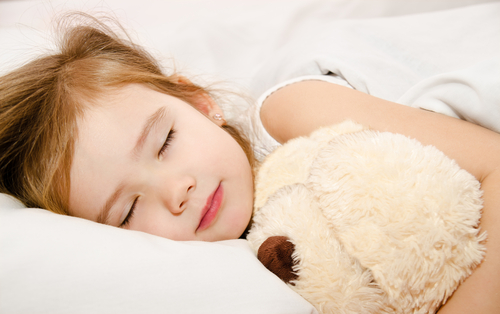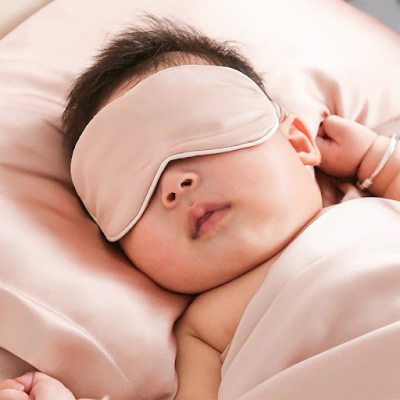A lot of parents are concerned about their children’s sleep habits. It is important for them to develop healthy sleeping patterns because it helps with the growth and development of your child as well as helping him/her stay focused throughout the day. This article will provide you with some tips on how to help your children get a better night’s rest by giving them a good bedtime routine that they can look forward to each evening!

Some Tips On Helping Children Get Good Sleeping Habits

-
Bedtime Routine Tips:
– Try not to make any major changes in your kids’ routines right before going to bed at night. If you do decide to change anything, try changing only one thing at first so that you don’t feel too overwhelmed and it does not have any effect on your sleep pattern.
– Make sure that you talk to your child about what happens during his/her daily activities like school every morning & afternoon. Ask them if there was something specific that happened today that made them upset. You’ll be able to find out more details from them than simply asking “How did your day go?”
– Keep an open communication line between both parent and child regarding what goes on around the house while everyone sleeps. Letting your kids know what’s happening may allow them to relax knowing that someone knows where they’re located at all times.
If this isn’t possible due to privacy issues, have the conversation outside of the bedroom door so no one hears it. – For younger children, keep the lights off after 7 p.m. The light in the room could cause them to wake up earlier than usual and disrupt their nighttime schedule. Some experts suggest putting a clock radio next to their bed to let them hear its ticking noise until they fall asleep.
– Don’t force your child into bed just because it’s time to sleep; instead, give him/her plenty of opportunity to say goodbye to friends and family members. Allow enough time for your child to play games, watch TV shows, read books, etc., prior to getting into bed.
-
Nightlight Options:
There are many different types of nightlights available, such as LED bulbs, incandescent bulbs, battery-operated lamps, solar-powered lamps, and even motion sensor options. In order to determine which type of option would work best for your child, consider several factors including the age of your child, size of the space, the amount of lighting needed, and budget considerations. While there are pros and cons associated with each type of choice, we recommend trying two different types of nightlights in various locations throughout the house to see which ones seem to work well with your child. By having multiple choices available, you’ll be able to easily switch back and forth without causing your child any confusion whatsoever.
-
Create A Consistent Bedroom Environment:
Children need consistency in order to develop healthy sleep habits. This means keeping regular schedules for meals, homework, bathroom trips, brushing teeth, and playing sports. It also includes creating a consistent environment throughout the house that encourages positive feelings toward sleep. Here are some ways to create a peaceful yet stimulating bedroom atmosphere:
– Include artwork on walls or shelves near your child’s bed. Artwork helps stimulate creativity and imagination in young minds. – Keep music at a low level. Music can help keep kids calm before they go to sleep. If your child likes listening to loud music while he sleeps, try choosing softer songs instead. Or place headphones over the speakers so that only he hears the soft sounds.
– Also if you have two kids of almost the same age then look for beds that would comfort them. Look for either full-size or queen-size beds. A queen-size bed is 6 inches wider and 5 inches longer than a full-size bed so choose accordingly.
– Be sure to remove clocks, phones, tablets, laptops, iPads, and digital watches immediately after lights out. These items may cause interruptions and disrupt sleep patterns.
-
Set Up A Quiet Room For Reading And Play Time:
When reading aloud to your child, make sure to establish rules regarding what toys, videos, DVDs, and activities must remain quiet. Also, ensure that all gadgets are turned off and removed from sight. Having this area separate from their bedrooms serves as an important reminder about how much noise is acceptable inside their rooms. Make sure to clean toys regularly, especially if they have small parts like buttons and screws. You want to give your child something easy to pick up and throw away rather than leaving messes lying around.
-
Establish Routine With Family Members To Prevent Disturbances During The Day:
If possible, avoid scheduling major events or obligations close to dinner times or times when your child is most active. Scheduling major activities far away from mealtime allows him to enjoy eating more freely and relaxes everyone involved. Also schedule sleepovers for weekends or holidays, allowing your child ample time to rest and recover from his busy week.
-
Use An Eye Mask When Sleeping In Close Proximity To Your Child:

Many parents believe that sleeping next to their children makes them feel closer to them. However, it’s actually proven by research that babies who spend too much time cuddling tend to become overtired because they’re not getting enough uninterrupted sleep. Plus, being right beside someone causes us to unconsciously monitor our own breathing and heart rate — both things that contribute to insomnia in adults. So if you do decide to snuggle up with your baby every now and then, consider using an eye mask. Not only will it provide extra comfort but it will also block light from entering your room, ensuring that your little one gets quality shut-eye!
-
Don’t Let Them Watch Television Before Going To Bed:
Television viewing negatively impacts many aspects of childhood development such as cognitive abilities, social skills, self-control, attention span, memory recall, motor coordination, language ability, emotional regulation, and overall happiness. Studies show that children exposed to media programs between 8 am to 9 pm often exhibit symptoms similar to those seen in ADHD due to lack of sufficient sleep. As long as your child doesn’t suffer from a diagnosed condition like ADD/ADHD, there should be no reason why he shouldn’t get adequate amounts of sleep. Instead, encourage him to engage in other fun family activities during these hours to prevent negative effects.
-
Keep Their Rooms Cool And Dark Enough That They Can Fall Asleep Easily At Night:
While the ideal temperature range for children’s rooms varies depending on age, it can help to keep temperatures around 65 degrees Fahrenheit. If you’ve got older kids, consider keeping their rooms cool to allow them to fall asleep faster at night. This way, instead of having to struggle through multiple naps throughout the day, they’ll eventually drift off once bedtime rolls around. On the flip side, warmer environments may cause overheating which could lead to restless nights and difficulty falling asleep.
-
Avoid Caffeine And Sugar After 4 Pm Or Earlier:
A study published in the Journal Of Clinical Psychiatry found that caffeine consumption decreases total sleep duration among adolescents. Additionally, sugar has been linked to poor sleep hygiene and an increased risk of obesity later in life. Because of these facts, try avoiding caffeinated drinks after 2 p.m., and limit sugary snacks to before dinner. It might take some trial and error to find out exactly how much caffeine is fine for your young ones, so just experiment until you discover what works best for each individual child.
-
Teach Children How To Recognize Signs Of Anxiety & Insomnia:
As mentioned earlier, kids’ brains develop differently compared to adult brains. Therefore, teaching them simple ways to recognize signs of anxiety and insomnia early on helps set a good foundation for future mental health issues.
Conclusion
Thus we hope that teaching your kids healthy sleep habits will help them a great deal later in their life. These habits are to remain with them for their whole lives and they would be able to manage for themselves all alone.
Interesting Related Article: “8 Tips for Establishing Healthy Tech Habits in Kids“

